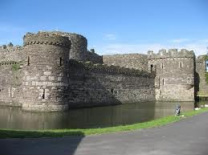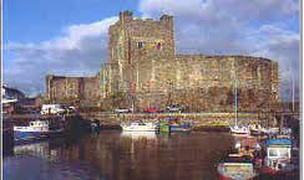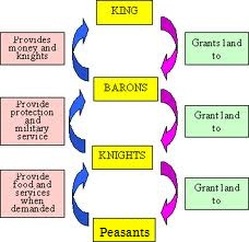The Castle has MANY places
09u8 89

A castle contains many rooms and different features. On this page discover what they're for and amazing facts on them.
THE MOAT :
A moat is a well known very amazing feature of a castle and has many rumors and myths about it. The most famous of all myths is probably that dragons and alligators lived in them which is really JUST A MYTH! In fact not very many castles actually had moats although many stories say that the castle had a moat.
Description : The moat was basically a deep, wide ditch dug in the ground which surrounds the castle. A dam would have to be built to supply the water safely into the moat. The water generally came from a river, stream, lake or spring. Some castle moats were up to 30 feet deep and at least 12 feet wide.An interesting fact is that moats could be filled with wooden stakes as well as water.
Purpose :
Defensive purposes of filling the moat with deep water are :
It makes it too deep for the enemy to wade through Anyone trying to swim across would be vulnerable To reduce the risk of tunelling To reduce the risk of fires
Defensive purposes of filling the moat with wooden stakes:
Description:
The medieval great hall is a room for entertainment, meeting and eating.It was used by everyone who lived in the castle. It was a large room with a loft ceiling and life in the castle revolved around this room. All of the meals where served in this room by pages and servants. Servants also ensured the hall was clean, the fires were laid and the lighting was perfect. Entertainment was a thing in Norman Castles with music, dancing, masques, jugglers, acrobats, jesters,plays etc.
Living conditions in the Medieval Great Fall:
Torches were used to light the great hall and central hearths with canopies provided heating. These were later to be replaced by fireplaces. As medieval people were progressing on cleanliness lavers were provided. These are stone basins used for washing! There were carpets or mats there sometimes but mainly straw.
Interesting Fact :
At Banquets the seating order worked like the feudal system.
Feudal System :
The medieval great hall is a room for entertainment, meeting and eating.It was used by everyone who lived in the castle. It was a large room with a loft ceiling and life in the castle revolved around this room. All of the meals where served in this room by pages and servants. Servants also ensured the hall was clean, the fires were laid and the lighting was perfect. Entertainment was a thing in Norman Castles with music, dancing, masques, jugglers, acrobats, jesters,plays etc.
Living conditions in the Medieval Great Fall:
Torches were used to light the great hall and central hearths with canopies provided heating. These were later to be replaced by fireplaces. As medieval people were progressing on cleanliness lavers were provided. These are stone basins used for washing! There were carpets or mats there sometimes but mainly straw.
Interesting Fact :
At Banquets the seating order worked like the feudal system.
Feudal System :
Seating plan :
The Privy:
Origin: The privy was the name given to a medieval toilet. It comes from the Latin word privatus which means private.
Weird fact: the privy was originally used to store clothes!
Funny names: Some funny names that the privy was called :
- garderobe
- jakes
- draught
- gong
Something else to make you laugh: the poor people who cleaned it were called GONG FARMERS!!!
Description:
There were many rooms used as toilets, called privies, included in Medieval Castles. The Privy was positioned as far away from the chambers as practical and often had double doors to keep the smell away! Eventually there were private privies built for important people. FACT: Were did the word "en suite" come from? - it was what they called the privies and it means in the sleeping area!
The Keep:
The most important place in the castle. It contained sleeping places, entertainment halls, servant quarters and eating places!
The King's chamber:
The king's chamber was his bedroom and at Carrickfergus Castle this happened to be the whole top floor!
Carrickfergus castle

Some Facts on Carrickfergus Castle's Rooms :
- The keep was the strongest part of the castle - it was a safe home for the lord and his family
- The keep had four stories - originally joined together by a Spiral Staircase
- Ground Floor - cellar, storage, no windows
- First Floor - door into keep, guardroom,public privy, small windows incase of attack
- Second Floor - Entertaining/court floor, private privy
- Third Floor - Private chambers, large windows, large fireplace, private privy
- Inner Ward - area within curtain wall, a sort of small village, small chapel





